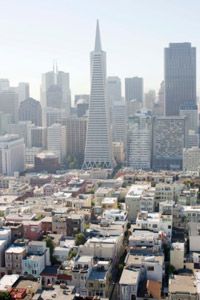Picture a two-story colonial with a house payment affordable enough that you can probably pay a neighborhood teenager to mow the expansive lawn. You see women with strollers taking their morning walks, kids riding bikes in the streets, and cars rolling into garages right around six o'clock, just as dinner is being set on the table. This is the vision of a suburban existence. The suburbs were once considered the ideal place to move your family and raise your 2.3 kids. But as the suburbs became more populated, the developers came rolling in. Woods and greenery were removed to make way for strip malls with chain stores and lots more housing developments. And more people, much like the ones that already lived there, showed up with their families and their moving trucks. The suburbs started sprawling outward, and their residents started commuting longer hours to their jobs in the city. This is the reality of a lot of the suburbs of today.
So what's the pull? Well for one, suburbs are statistically proven to be safer places to live than cities. It's one thing if you only have yourself to think about, but once you have kids, their safety is paramount to your peaceful existence. With the knowledge that you can trade up for a house that's quadruple the size of a city condo, it's more than a little tempting to think about. And let's face it, public schools in the 'burbs tend to be better than schools in the city. It's a simple equation -- public schools are funded by taxpayers, and the suburbs often have wealthier districts.


